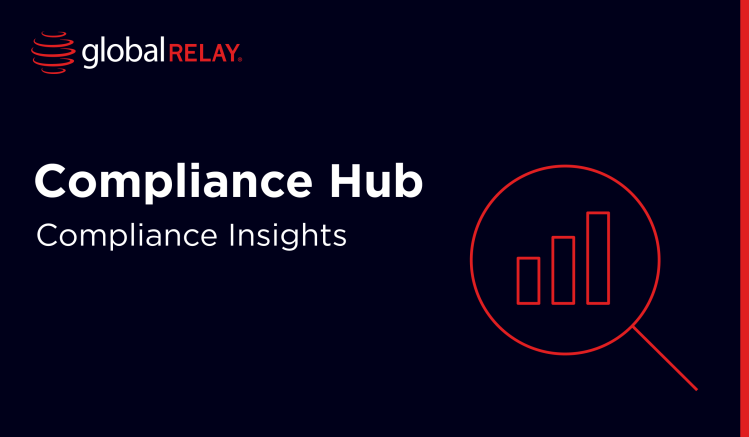
Understanding Compliance Risk Management: Definitions, Importance, and Strategies
Looking back on the first half of this decade, it’s clear that regulators have been under pressure to constantly introduce and update the rules to meet modern demands, leading to a very dynamic market.
Written by a human
For example, the EU has been the first to create dedicated regulatory frameworks around AI usage around two years after ChatGPT first burst onto the business scene, leaving the rest of the global markets to take note, and make their own moves.
With a constant state of change comes elevated compliance risks, and organizations must prioritize the management of these risks in order to stay on the right side of the regulator.
What is Compliance Risk?
Compliance risks are the potential consequences of not following regulatory requirements. The term encompasses all of the possible legal penalties, fines and reputational damage associated with a risk event happening.
For organizations, compliance risks are just as important as the other risks of operating, including strategic, financial and environmental. As such, performing regular risk assessments through the lens of monitoring compliance is vital for identifying and managing regulatory vulnerabilities.
There are five key types of compliance risk to consider:
| Type of compliance risk | Example in an organization |
| Poor practices | Internal fraud and money laundering |
| Data breach | Phishing, cyberattacks and malware |
| Environmental damage | Health and safety violations caused by poor air ventilation and mold |
| Operational gaps | Due diligence and quality assurance failures |
| Social impact risks | Poor management culture, failure to meet labour laws |
Of course, each of the risks detailed in the table above are just examples and not exhaustive, which means that it’s up to businesses to set their own compliance risk definition, consider the regulations which apply to them, and how best to meet those requirements to avoid compliance risk.
Understanding Compliance Risk Management
Compliance and risk management refers to the continuous process of identifying, analyzing and mitigating the risks associated with regulatory errors. The term covers the entire process of managing compliance risk, including the responsibilities of each role, the mandatory procedures, detection measures and response plans to prevent the potential negative consequences that may follow a risk event.
The relationship between risk and compliance is directly inverted; theoretically, strong compliance minimizes regulatory risk. However, this theory only goes so far; and at a certain point, risk events are bound to happen. This is especially true for data compliance, as cyberattacks are growing increasingly complex.
After learning about this inevitable, some leaders choose to completely reallocate resources away from compliance risk management – after all, if risks are going to occur anyway, what’s the point?
But at Global Relay, we’d argue that this makes compliance risk management even more vital.
Proving that you have followed a regulator’s best practices goes a long way after a breach occurs, and can help curtail any enforcement actions during a post-risk investigation. For example, in 2019, FINRA updated its guidance to include special exemptions to credit both businesses and individuals that demonstrate exceptional co-operation.
Managing risks in compliance also aids organisations in their response planning – further limiting the financial, regulatory and reputational impacts of risk events.
Importance of Compliance Risk Management
In 2021, Dutch Bank ABN Amro agreed to pay $480 million in regulatory penalties after it failed to comply with the EU’s anti money laundering and counter terrorist financing Act. Many failings were identified by investigators, including:
- Missing customer data and documents
- Failure to complete due diligence
- Risk classification errors (compounded by the fact that cash usage, which can indicate high risk, was not taken into account in the risk algorithm)
- No regular re-assessments
- Suspicious behavior and transaction alerts were not processed correctly
These compliance errors led to account holders abusing their positions and engaging in criminal actions, using their ABN Amro accounts to fund their illicit activities. As such, the bank was fined for its poor compliance risk management, and consumer trust was also tested.
While ABN Amro is an example of an extreme case, it does outline exactly why regulated companies should prioritize their compliance risk management as much as their growth, efficiency and other business functions.
Strategies for Effective Compliance Risk Management
Relying on a framework
Developing your own compliance risk framework is an effective way to approach the task at hand, and there are many pre-existing standards that businesses can choose to base their operations and performance around.
For example, the ISO 31000 describes the procedures for decision-making in the face of risks. Companies can use this framework to guide their own SOPs for treating risks, reviewing and reporting to maintain best practices.
Deploying Automation
Working with automation and AI during certain phases of compliance risk management can remove the stress from the process. In particular, automating the approval process is a great way to speed things up without increasing the risk.
Let’s use the example of expenses management, a (hopefully) low risk process. Traditionally, staff would have to make their budget request in advance, via email where it could easily get lost. Their manager, or a member of the finance team would have to amend or approve the request. Then, after purchasing, the employee would have to manually submit their receipt for upload to the staff portal, and another member of the team would have to wade through all the expenses to match this transaction.
Here’s how the flow could look with automation:
- Company uses an app to manage expenses, where employees are automatically granted a budget for pre-approved expenses based on seniority
- For purchases above the threshold, the requester can notify their approver in-app, who can provide an instant approval or amendment signature without back-and-forth
- Purchaser snaps a photo of their receipt in-app and it’s automatically matched to the approved request
Partnering with the professionals
Teaming up with the people who really know compliance risk management is an effective way to move forward. This provides external validation to the risk management that you’re already doing well, and a helpful eye to parts that need improving.
For example, Global Relay can help with the implementation of compliant messaging, on any channel. By putting compliant risk management at the heart of the business, we provide fully integrated solutions and help you to stay ahead of the evolving world of risk management.
Understanding Compliance Risk Management
As we look ahead to the next half of this decade, it’s clear that more technology advances are on the cards, especially as AI agents build on the current systems in place. Regulated businesses must consider the time and knowledge investment required to stay compliant as risks, and standards, evolve. Importantly, relying on strong foundations, letting automation do the heavy lifting and partnering with the professionals will be key.
